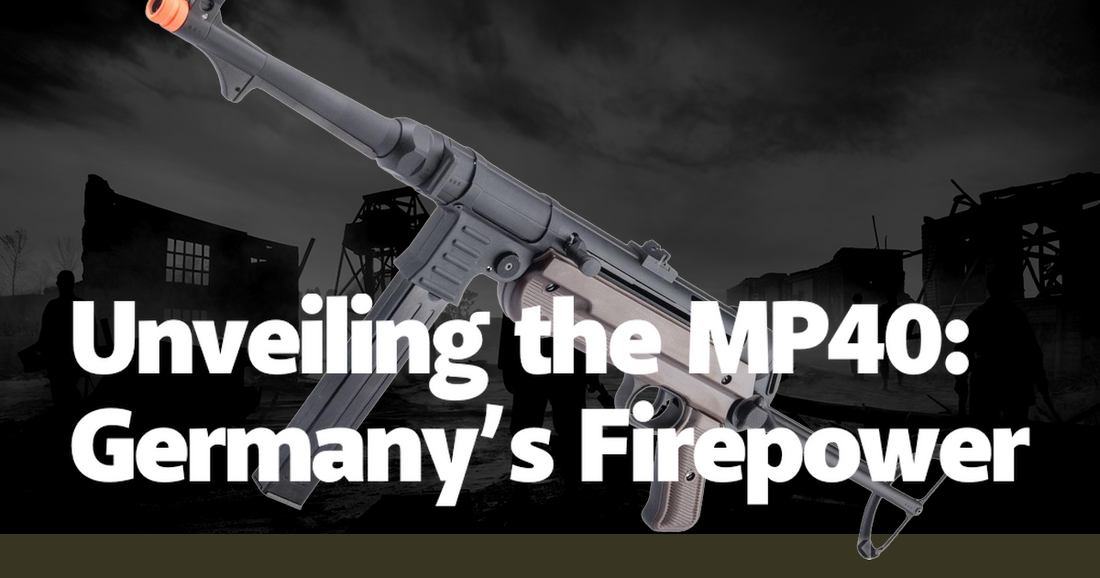In the annals of military history, few weapons have achieved the iconic status of the MP40, Germany’s submachine gun that became a symbol of Nazi firepower during World War II. Introduced in 1940, the MP40 was a revolutionary design that combined simplicity, reliability, and deadly efficiency. Its distinctive silhouette, with a folding metal stock and a sleek, compact frame, was a familiar sight on battlefields across Europe and beyond. The MP40 was not just a weapon; it was a statement of technological prowess and tactical innovation that left an indelible mark on the course of the war.
The MP40 was designed by Heinrich Vollmer, who built upon the earlier MP38 model, itself a significant departure from traditional submachine guns. Vollmer’s design incorporated stamped steel parts, which made the MP40 easier and cheaper to produce in large quantities. This was a critical factor for the German war machine, which needed to equip its troops rapidly as it expanded its territorial ambitions. The MP40’s 9mm Parabellum rounds were fed from a 32-round magazine, and it had a rate of fire of around 500-550 rounds per minute. This balance of firepower and control made it an ideal weapon for the close-quarters combat that characterized much of the fighting in World War II.
The MP40’s impact on the battlefield was immediate and profound. German soldiers, particularly those in the elite Waffen-SS and paratrooper units, used the MP40 to devastating effect in urban warfare and other close-quarters engagements. Its compact size and folding stock allowed for easy maneuverability in the tight confines of city streets and buildings. Anecdotes from the Battle of Stalingrad, one of the war’s most brutal urban confrontations, frequently mention the MP40’s role in the intense house-to-house fighting. Soldiers could quickly transition from room to room, their MP40s ready to unleash a hail of bullets at any moment.
Despite its effectiveness, the MP40 was not without its flaws. The open-bolt design, while simplifying production and reducing costs, made the weapon more susceptible to jamming, especially in harsh conditions like the Eastern Front’s brutal winters. Additionally, the magazine was prone to malfunction if not properly maintained, a common issue reported by soldiers in the field. These shortcomings, however, were often overshadowed by the MP40’s overall reliability and ease of use. It was a weapon that even inexperienced soldiers could quickly learn to handle, a crucial advantage in the chaotic and rapidly changing environments of World War II battlefields.
The MP40 also had a psychological impact on both its users and their adversaries. For German soldiers, carrying an MP40 was a mark of distinction, a sign that they were part of an elite unit. For Allied troops, the distinctive chatter of the MP40’s automatic fire was a sound to be feared and respected. Stories from veterans of the Normandy invasion recount the chilling realization that they were up against well-armed and highly trained German forces. The MP40’s presence on the battlefield often forced Allied soldiers to adapt their tactics, emphasizing the weapon’s role not just as a tool of war, but as a psychological weapon as well.
The legacy of the MP40 extends beyond World War II. Its design influenced numerous post-war submachine guns, including the Israeli Uzi and the American M3 Grease Gun. The MP40’s emphasis on simplicity, reliability, and ease of production became guiding principles for future firearm designs. Even today, the MP40 is a popular collector’s item, revered by military historians and firearm enthusiasts alike. Its enduring legacy is a testament to the ingenuity and impact of its design, a reminder of a time when technological innovation could change the course of history.
The MP40’s story is also a reflection of the broader technological and tactical shifts that characterized World War II. The war was a crucible of innovation, where new technologies and strategies were rapidly developed and deployed. The MP40 was part of this wave of change, representing a shift towards more mobile, flexible, and powerful infantry units. It was a weapon that embodied the brutal efficiency of the German war machine, a tool designed for a new kind of warfare that emphasized speed, surprise, and overwhelming firepower.
In the final analysis, the MP40 was more than just a submachine gun; it was a symbol of an era. It represented the intersection of engineering prowess, tactical innovation, and the harsh realities of war. Its impact on the battlefield was matched only by its influence on future firearm designs, making it one of the most significant weapons of the 20th century. As we look back on the history of World War II, the MP40 stands out as a reminder of the transformative power of technology in shaping the outcomes of conflicts and the course of history itself.

